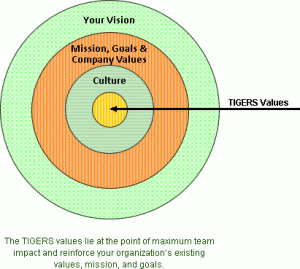
This is why we found a recent study by Towers Watson in conjunction with Forbes Insights to be interesting but not astounding.
“As the economy improves, companies are putting more emphasis on ways to enhance financial performance”
Human resource (HR) executives and their finance counterparts believe a stronger partnership is in their future, especially when it comes to helping their organizations boost performance and improve their return on investment in people. The two functions agree on many people- and performance-related issues, but diverge in terms of how broadly and rapidly increased collaboration will occur, according to the study.
The survey, Driving Performance through HR and Finance Collaboration, found that the functions already partner to a greater extent than many might expect, although they differ over the extent of both current and future collaboration. The top areas of joint activity today are setting annual budgets for reward programs (cited by 46% of finance and 62% of HR), determining changes to reward programs (43% finance and 42% HR) and setting reward strategy (39% finance and 41% HR). However, there is far less collaboration in areas likely to become more important in the future, including setting an overall workforce strategy (35% finance and 23% HR) and talent management (32% finance and 20% HR). And while both functions agree there will be more collaboration in the next three years, HR respondents were far more likely to think so (70%) than finance respondents (49%).
“As the economy improves, companies are putting more emphasis on ways to enhance financial performance,” said Emmett Seaborn, a senior consultant at Towers Watson. “While the HR and finance functions have traditionally worked independently, both groups recognize that it’s their employees who ultimately add value and help drive performance, and that for these workforce programs to succeed, they will need to collaborate more in the future.”
Return on investment (ROI) on reward programs is an area ripe for improvement since neither group believes current ROI is where it should be. According to the survey, just 56% of finance respondents and 61% of HR respondents agree their company’s current ROI on rewards is acceptable. Overall, only 12% of all survey respondents indicated they didn’t currently measure reward ROI, while just under two-thirds (64%) use financial metrics and just over half (53%) use workforce metrics. Fewer than half (47%) measure ROI in operational areas like productivity or innovation, despite the importance of these factors in strategic growth. And only slightly more than a quarter (27%) use customer metrics, a gap that companies will want to close, given the direct impact employee actions and behavior have on customer loyalty and buying patterns.
Both respondent groups identified the same top reward priorities for the next three years, all of which are aimed at improving their ROI on reward programs. These priorities are increasing the linkage of rewards to company performance, differentiating rewards across talent segments to better reflect people’s roles and contributions, and increasing the linkage of rewards to individual performance. HR and finance executives were also closely aligned on top people risks, with both groups focusing on insufficient leadership development (44% finance and 60% HR), inadequate retention of people and skills required for growth (40% finance and 49% HR), and inadequate investment in talent for critical roles (34% finance and 50% HR).
“HR/finance collaboration can and should go beyond rewards to encompass the full strategic workforce agenda,” said Seaborn. “Ultimately, sustaining and improving performance must be a shared responsibility between the two functions since it depends so heavily on the relationship between what an organization can afford to invest in its people and the financial goals it has to deliver,” Seaborn concluded.
About the Survey
The Towers Watson/Forbes Insights survey was conducted in February 2013, and includes responses from 122 HR executives and 218 finance executives at U.S. and global organizations. Survey respondents ranged in size from 1,000 to more than 25,000 employees and represented a broad range of industries. The full report is available at towerswatson.com.
My Conclusions
This is a small pool of respondents compared to the 2,835 Senior HR Executives who responded to our survey, Is Team Work a Waste of Time? What we learned is that collaboration in traditional, top-down organizations remains dismally poor as is the will to correct these issues in the largest of companies. “Keep your head down and do your work” seems to be the rallying call of traditionalists. However, time and time again we see marked increases in R.O.I when we the companies we facilitate through action planning choose inter-departmental collaboration as a cost savings initiative with gain sharing bonuses applied to collaboration incentives.
Copyright TIGERS Success Series by Dianne Crampton
TIGERS Success Series is a proprietary team development system with a two decade track record in helping leaders build teams of collaborative, trustworthy, interdependent, genuine, empathetic, risk resolving and successful employees.
TIGERS also certifies and licenses HR professions in the TIGERS royalty-free system which improves team work with distinct levels of team building activities that support high levels of team improvement.
